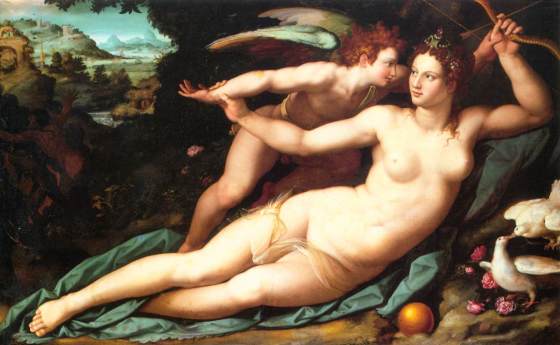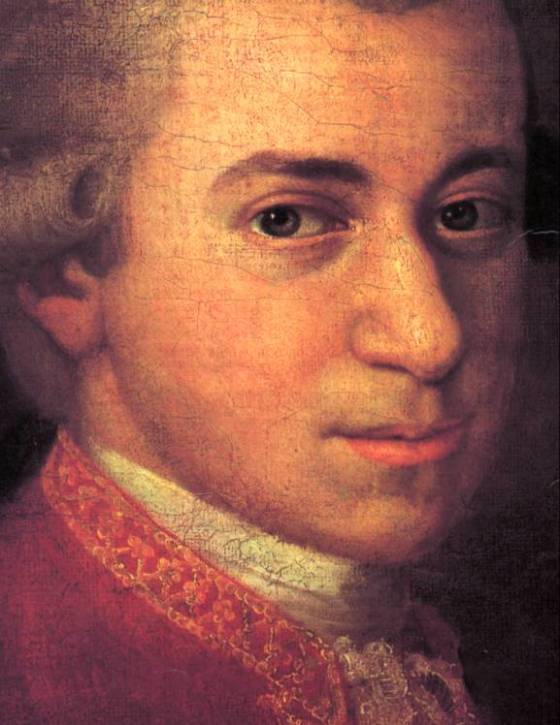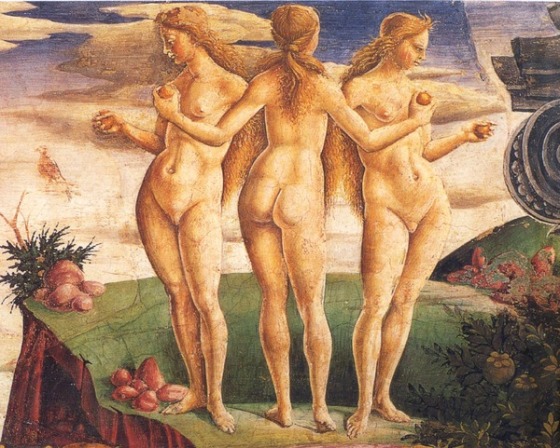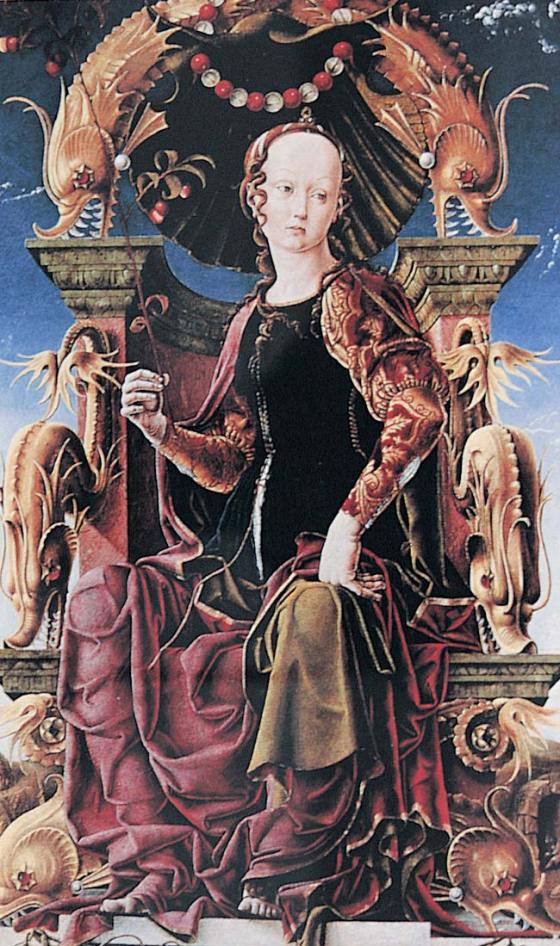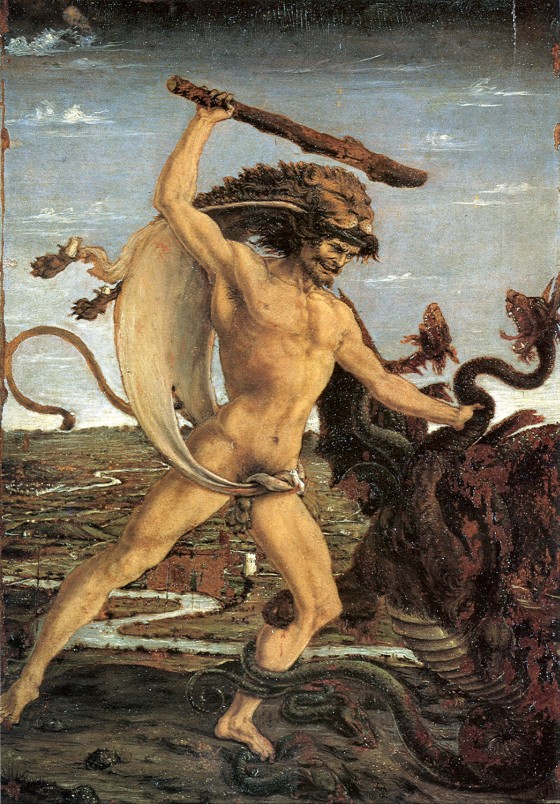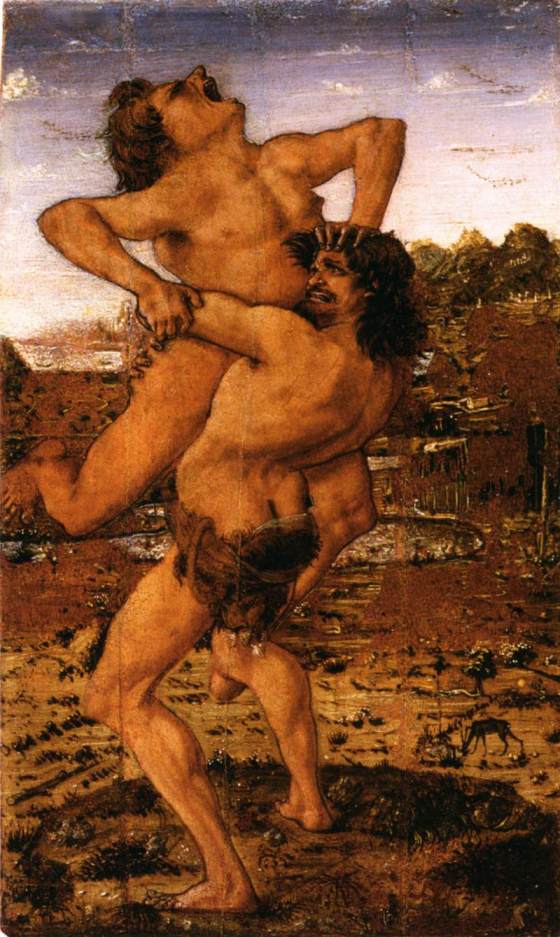Alessandro Allori: Venus Disarming Cupid, before 1570, 261×181cm, Musée Fabre, Montpellier.
Horace: Persian Fopperies
BOY, I hate their empty shows,
Persian garlands I detest,
Bring not me the late-bloom rose
Lingering after all the rest:
Plainer myrtle pleases me
Thus outstretched beneath my vine,
Myrtle more becoming thee,
Waiting with thy master’s wine.
Translation by William Cowper.
Johann Nepomuk della Croce was very popular in his time, it has been estimated that he painted 5,000 portraits. In 1780 or 1781 he painted the Mozart family. The portrait of Wolfgang Amadeus that you see above is a detail of that picture. It is considered one of the best portraits from his lifetime and was the main source for the well-known posthumous one by Barbara Krafft.
The last movement of the Piano Sonata No. 11 in A major, K 331, Alla Turca, popularly known as the Turkish Rondo, is one of Mozart’s best-known piano pieces. It imitates the sound of Turkish Janissary bands, the music of which was much in vogue at the time. It is not known where and when Mozart composed the sonata. Vienna or Salzburg around 1783 is thought to be most likely, though Paris and dates as far back as 1778 have been suggested as well.
Peter Roland: Hymnus Europae
EST Europa nunc unita
et unita maneat;
una in diversitate
pacem mundi augeat.
Semper regant in Europa
fides et iustitia
et libertas populorum
in maiore patria.
Cives, floreat Europa,
opus magnum vocat vos.
Stellae signa sunt in caelo
aureae, quae iungant nos.
In the years 1469/70, Cosimo Tura and Francesco del Cossa painted some allegorical frescoes for the Este family in their Palazzo Schifanoia right outside the walls of Ferrara. This is a detail from the background of the Allegory of April, showing the three Graces, the oldest surviving post-classical rendering of this subject.
Michelangelo: Poem
RAVISHED by all that to the eyes is fair,
Yet hungry for the joys that truly bless,
My soul can find no stair
To mount to heaven, save earth’s loveliness.
For from the stars above
Descends a glorious light
That lifts our longing to their highest height
And bears the name of love.
Nor is there aught can move
A gentle heart, or purge or make it wise,
But beauty and the starlight of her eyes.
Translation by George Santayana.
The second small picture of Heracles Antonio Pollaiuolo painted for Lorenzo il Magnifico, of equal height, fighting the lion, seems to be lost completely. Heracles fighting the Hydra is in the Uffizi, and even in better condition than Antaeus. Vasari writes about it:
The third picture, wherein Hercules is slaying the Hydra, is something truly marvellous, particularly the serpent, which he made so lively and so natural in coloring that nothing could be made more lifelike. In that beast are seen venom, fire, ferocity, rage, and such vivacity, that he deserves to be celebrated and to be closely imitated in this by all good craftsmen.
Antonio Pollaiuolo painted three small pictures of Heracles for Lorenzo il Magnifico, each about 17cm high. One of them seems to be lost, the other two are in the Uffizi. Vasari writes:
The first of these, which is slaying Antaeus, is a very beautiful figure, in which the strength of Hercules as he crushes the other is seen most vividly, for the muscles and nerves of that figure are all strained in the struggle to destroy Antaeus. The head of Hercules shows the gnashing of the teeth so well in harmony with the other parts, that even the toes of his feet are raised in the effort. Nor did he take less pains with Antaeus, who, crushed in the arms of Hercules, is seen sinking and losing all his strength, and giving up his breath through his open mouth.
Antaeus was the son of Poseidon and Gaia, invincible as long as his feet touched the ground. Heracles, on discovering his secret, lifted him up and crushed him in his arms.
